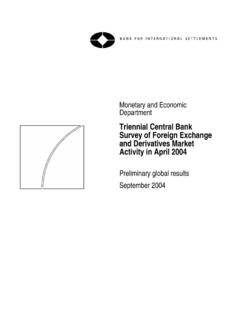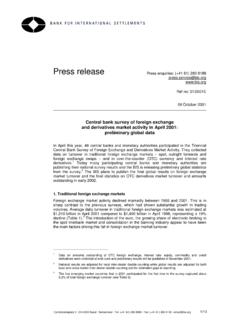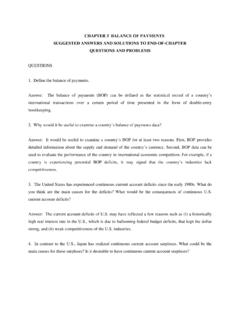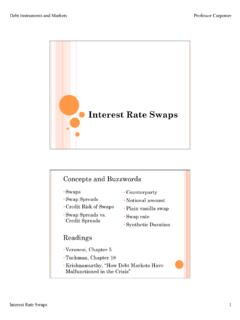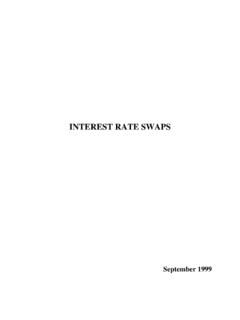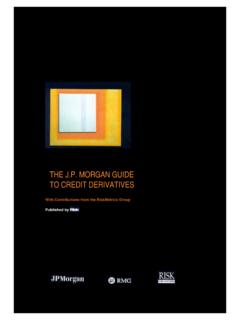Transcription of Corporate Finance Professor Gordon Bodnar
1 SAIS Class Note on Valuing swaps p. 1 Corporate Finance Professor Gordon Bodnar Class Note on Valuing swaps A swap is a financial instrument that exchanges one set of cash flows for another set of cash flows of equal expected value. swaps allow parties to take speculative positions on certain financial prices or to alter the cash flows of existing assets or liabilities, most often to manage risk or to convert cash flows of one type of security into the cash flows of another type without physically have to sell the old one and buy the new one. In all cases, when a swap is initially set up, the payment structures are set so that the PV of the expected amount a party pays is equal to the expected amount that that party receives. Thus at issuance the swap is a zero NPV contract (ignoring transaction costs).
2 This means the PV of the expected cash flows to one side of the swap equals the expected cash flows to the other side of the swap at initiation. However, if the financial prices or expected prices upon which the swap is based changes, the value of the swap will change. When the value changes, one party to the swap will experience a gain equal to the increase in the value of swap, while the other party to the swap will experience an equivalent loss (zero sum game). Below we will consider both interest rate and currency swaps and consider how to measure their change in value in response to changes in their underlying financial prices interest Rate swaps Let s consider an interest rate swap first. In an interest rate swap, parties are exchanging fixed interest rate payments for floating interest rate payments on some notional value.
3 To define an interest rate swap we start by defining a notional value a principal amount upon which the interest payments are calculated. However, this principal amount is not exchanged at the beginning or end of the contract, as it is not necessary (why give $100 just to receive $100?) As a result, interest rate swaps consist only of exchanges of periodic interest payments. Consider the following situation. A firm enters into a two-year interest rate swap with a notional principal of $100M. The firm agrees to make four semi-annual payments at a fixed interest rate of (APR) and receive four semi-annual floating rate payments of LIBOR, denoted hereafter by L, plus on the notional principal. At initiation of the swap, LIBOR is (APR). Below is a diagram of the cash inflows and outflows of this swap for the firm that entered into it.
4 This firm would be long an interest rate swap as it is in a position to gain if interest rates rise. The counterparty to this swap has exactly the opposite cash flow structure (they are short a swap). The cash flows are exchanged at the end of each semi-annual period. While the fixed interest rate side payments each period are known with certainty, $100m x = $ each period, the floating rate side is known with certainty only for the first payment as it is based upon current LIBOR of plus a spread. Thus the first floating rate payment is $100 x = $ Future floating rate payments each period will depend on the future LIBOR rates . Their expectations are such that they have the same PV as the fixed side flows. Again notice that there are no notional principal exchanges with an interest rate swap.
5 Receive Pay$100m x $100m x $100m x $100m x 0 1 $100m x LIBOR0/2= $ $100m x $100m x LIBOR1/2$100m x Pay$100m x $100m x $100m x $100m x $100m x LIBOR0/2$100m x $100m x LIBOR1/2$100m x Class Note on Valuing swaps p. 2 We can also express the cash flows from this swap in table form: Year 0 1 2 CFs to be received $ $100M x $100M x $100M x ( + )/2 (L1 + )/2 ( + )/2 CFs to be paid $ $ $ $ We could determine the expected floating rates ( , L1, ) using the Expectation Theory of the Term Structure, as this is how the market will form its expectations at the beginning of the swap. However, we know that the PV of the cash flows to the floating rate side of the swap must equal the PV of the cash flows to the fixed side of the swap, which are PV ANNUITY (N = 4, I/Y = , PMT = $ ) = $ This comes from realizing that the swap is a zero NPV security at initiation.
6 Valuing an Existing interest Rate Swap Now let s consider how to determine the value of an interest swap at some point in the future when economic conditions have changed relative to the origination of the swap. Suppose 6 months ( year) into the swap, at the date of the first interest payments, interest rates are now lower than originally expected. This means both the current fixed rate and the current and expected future LIBOR rates are lower than they were expected to be at the beginning of the swap. The firm will suffer a loss on the swap as a result of this drop in rates as it is stuck paying the old (higher) fixed interest rates , and receiving the (now lower) set of LIBOR rates , both currently and forecasted into the future. The question is how much does the firm lose on this swap?
7 This depends on how much interest rates changes and the maturity of the swap. Assume that rates change such that the fixed interest rate on a new swap with a maturity of only years is (APR), and current LIBOR is (APR). There are two ways we can determine the value of the original swap. Method 1: Discount Remaining Fixed Cash Flows and Phantom Principal Repayment Determine the PV of the remaining fixed interest rate payments including the phantom repayment of the notional value at the maturity on the original swap at the new fixed rate of interest for a swap with that remaining maturity and compare this to the PV of the floating rate side of the original swap, which is by definition equal to the notional principal of the original swap. Below is a table with the remaining fixed rate cash flows on our interest rate swap (defined above) as of time , just after the first semiannual interest payments are made, plus the phantom notional principal repayment at maturity.
8 (Note repayment of notional principal at maturity does not really occur but we must include this phantom cash flow to get the value correct). Year 1 2 Remaining Fixed Rate CFs $ $ $ on original swap + $100M Take the PV of these CFs at the new fixed interest rate for a 2-year swap of (APR) or per period. PV of Fixed interest payments = -$ /( ) + -$ ( )2 + -$ ( )3 = -$ Thus the current value of the fixed payments to the swap is $ This is the PV of the payment the firm must make on the swap. The market value of the floating rate side of the swap will, by definition, be $100M (the PV of floating rate payments on $100M where the rates adjust for interest rate movements). So, with the PV of what the firm must pay at $ and the PV of what the firm will receive at $100M, the firm has lost $ of value on the swap as a result of the interest rate changes.
9 SAIS Class Note on Valuing swaps p. 3 Method 2: The Offsetting Swap Approach This method involves imagining that the firm enters into a new swap at current market prices that offsets one side of the remaining cash flows on the existing swap. We take the present value of the net cash flows of the two swaps together, which is typically a net fixed rate payment at the current fixed interest rate on the new swap. This approach takes advantage of the fact that the new swap has zero NPV, so when we combine its cash flows with the existing swap s cash flows the PV of these net cash flows will, be definition, produce the value of the original swap at the new market conditions. Consider the original swap above at time , with the same set of mew market conditions (the fixed interest rate on a new swap with a maturity of years is (APR).)
10 And current LIBOR is (APR)). To implement this approach on our swap above at time , we would need to enter into a new swap with a $100M notional value on which we pay the floating LIBOR rates plus spread ($100M x (L + )/2) and receive fixed payments at the new lower fixed interest rates (APR) ($100M x = $ ). Since no principal amounts are exchanged in an interest rate swap and we assume that the interest payments on the original swap at time have just been made, there are no net cash flows at the current moment. These cash flows on the original and new swap are as follows: Year 1 2 CFs to be received $100M x $100M x $100M x ( + )/2 (L1 + )/2 ( + )/2 CFs to be paid $ $ $ CFs to be received $ $ $ CFs to be paid $100M x $100M x $100M x ( + )/2 (L1 + )/2 ( + )/2 You can immediately see that the new swap is set up so that netting the cash flows from these two swaps results in a perfect offset of the floating rate payments and a small net payment (outflow) on the floating rate side.
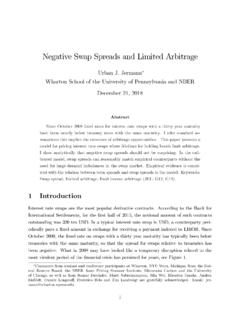
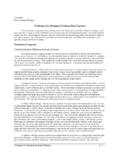


![Dif In Dif Slides.ppt [Repaired] - Wharton Finance](/cache/preview/e/2/9/5/4/6/1/8/thumb-e29546186543c246a2365bc5cbc8c9a4.jpg)

